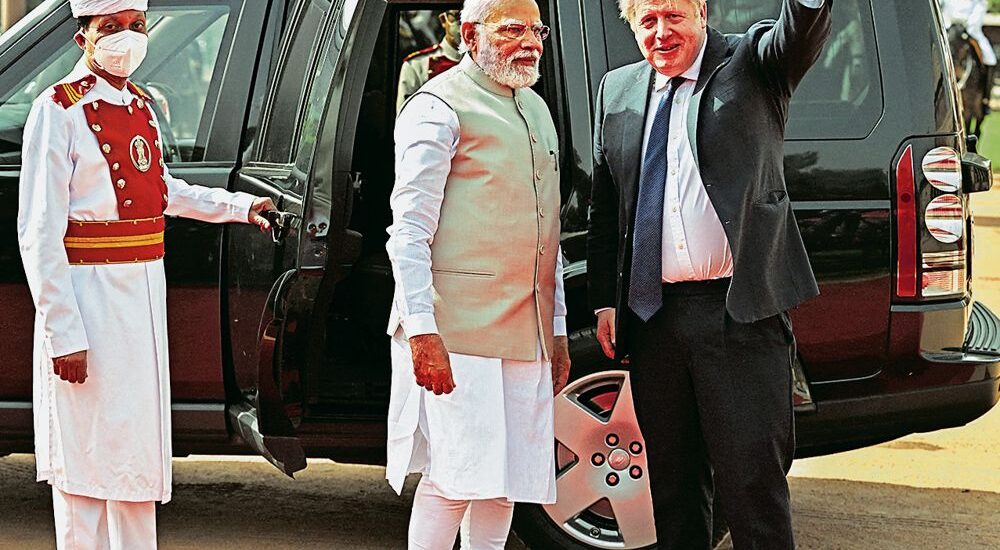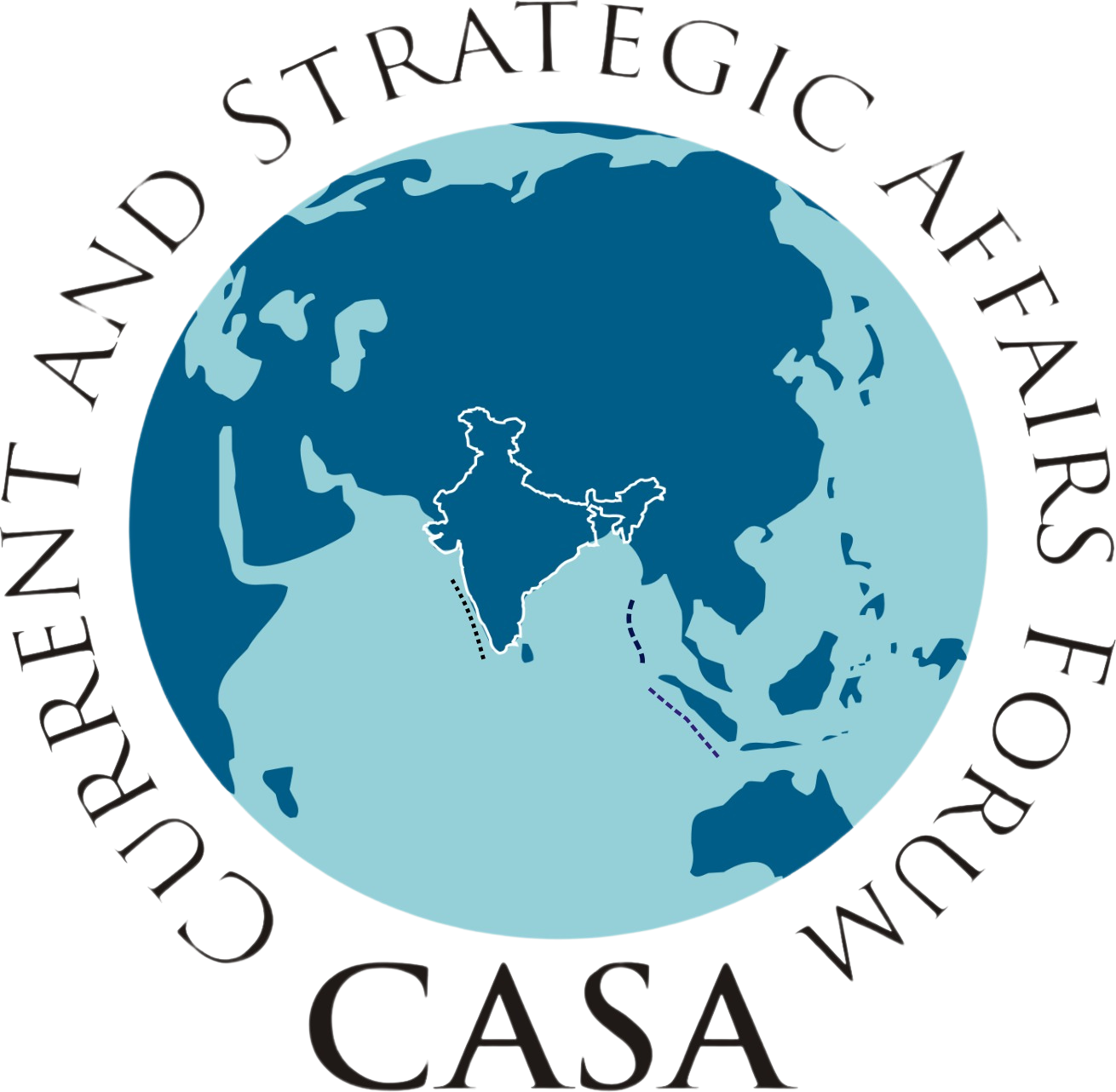Strategic shift in Europe’s ties with India
- May 2, 2022
- Posted by: admin
- Categories: Europe, India



Gurjit Singh
Former Ambassador
Visits in quick succession by UK Prime Minister Boris Johnson and European Commission President Ursula von der Leyen manifest Europe’s keenness to engage India despite preoccupation with Ukraine. Post-Brexit UK and the EU are in a race to win India’s support. The UK would like to be ahead, but the EU is unrelenting.
India wants the UK and EU to deviate from their traditional ambivalence towards an aggressive China and towards terrorism originating from Pakistan. Both the UK and EU miss the Indian preference. Calling democracies to stand together on Ukraine, and not on China or Pakistan, is hypocritical. However, their perceived divergence from India on the Ukraine issue is not as deep as it seems.
Foreign Ministers from Austria, Greece and the UK were here too. India’s President visited the Netherlands recently. In May, summits with Germany and the Nordic nations are planned.
Over the past five years, India’s European policy has sought a multipolar world. India’s European engagement is institutionally with the European Union (EU) and with bilateral and plurilateral partners. New Delhi had a successful virtual India-EU summit in July 2020. In May 2021, PM Modi had the first ever ‘India-EU Leaders Meeting’ with all 27 EU countries. A virtual summit with the UK in May 2021, and meetings at the COP 26, at G7 and G-20 in 2021, added to the India-Europe connect.
The ‘India-EU Strategic Partnership: A Roadmap to 2025’ guides action for the India-EU strategic partnership. Despite the EU having an Indo-Pacific policy enunciated in April 2021, gaps remained in its outreach to India. The EU was subdued in its criticism of China and it had the only major Indo-Pacific policy which did not target China for its debasement of international rules. With the UK, the ‘2030 Roadmap for India-UK future relations’ is leading to Vision 2047 with shared security and prosperity as the guiding force.
India wants both the UK and EU to deviate from their traditional ambivalence towards an aggressive China and towards terrorism originating from Pakistan. Both the UK and the EU miss the Indian preference. Calling democracies to stand together on Ukraine, and not on China or Pakistan, is hypocritical.
In recent weeks, both the UK and the EU were busy criticising Russia and readjusting their relationship with it due to the Ukraine crisis. The EU and UK put Ukraine at the top of their agenda. The war is clearly a threat to international security; India agrees that it should end but differs with both in their vociferous public condemnation of Russia. That both the UK PM and the European Commission President visited India during the Ukraine crisis shows that the perceived divergence from India on Ukraine is not as deep within the establishment as it seems.
Strategically, India continues to seek an understanding of China, both domestically and internationally. India does not want Chinese transgressions ignored simply because Russia invaded Ukraine. Europe and the UK are expected to demonstrate a realistic global view if they want their Indo-Pacific policies taken seriously.
The EU and the UK are competing to complete an FTA with India. Both have shown political inclination, which India reciprocates. The recent agreements with the UAE and Australia show Indian readiness, but the terms of engagement cannot be of 2007-13 when the India-EU Broad-based Trade and Investment Agreement (BTIA) was stalled. The economic partnership must acknowledge India’s role in combating the pandemic and contributing to global economic recovery. It is this which brings the EU and UK to India.
The pandemic and the sanctions on Russia will knock down EU and UK’s GDP by 5%. They aspire for enhanced trade and investment with India to soften the blow of Covid-19 and the curbs. Greater strategic intent is required; it is unlikely that India will provide relevant opportunities without recognisable reciprocal openings.
Another important area is FDI. This is linked to greater B2B cooperation between Indian, EU and UK companies. If the FTA and the investment agreements are properly implemented, like the India-Australia Economic Cooperation and Trade Agreement, quick results can emerge. The Indian market is ready to accept expanded FDI. This requires capital and technology to marry India’s inherent strengths. The Atmanirbhar Bharat approach will be consolidated and new investments will be in digital areas but also in manufacturing. This is the Japanese model which has both manufacturing and digital aspects duly covered. Japan committed an investment target of $42 billion in the next five years. The EU and the UK also need to set similar targets to be taken seriously.
The India-EU Connectivity Partnership must get project lending to generate business production in India. For instance, several Metro projects are funded by the European Investment Bank, Agence Française de Développement and KfW. European companies participating in these projects need to transfer technology and build more Metro-related equipment, including locomotives, rolling stock, rails etc. in India. The $1 billion investment through British International Investment for green projects is in the same category.
The Western intent to get India weaned off Russian energy and defence equipment saw nascent beginnings. With the UK and EU, renewable energy is always high on the agenda. Now, the UK added hydrogen and nuclear partnership.
The UK has consolidated its defence collaboration plans for co-production in India which Western suppliers avoided. Joint production of defence technology and systems including maritime electric propulsion systems, fighter aircraft, advanced jet engine technology and naval architecture are on the anvil. Emerging domains of defence including space, Artificial Intelligence and cyber security are being discussed.
With the EU, the most significant is the establishment of an India-EU Trade and Technology Council. This will enhance coordination in the cross-cutting aspects of trade, technology and security besides providing political guidance to the strategic engagement. This is a 3+3 which the EU only has with the US. From the Indian side, the External Affairs Minister, Commerce Minister and the Minister for Electronics and IT will meet their EU counterpart commissioners. Among their focus will be the digital sector, including Artificial Intelligence and 5G. The finalisation of the Letter of Intent on high-performance computing in Covid drug research and climate modelling adds substance to this initiative.
India got the attention of both the UK and EU back to the Indo-Pacific. Ukraine was harmoniously discussed. The strategic intent of the Indian partnership emerged strongly. Efforts to support India in defence by the UK and energy by both the UK and EU are important efforts for a diversified relationship.
